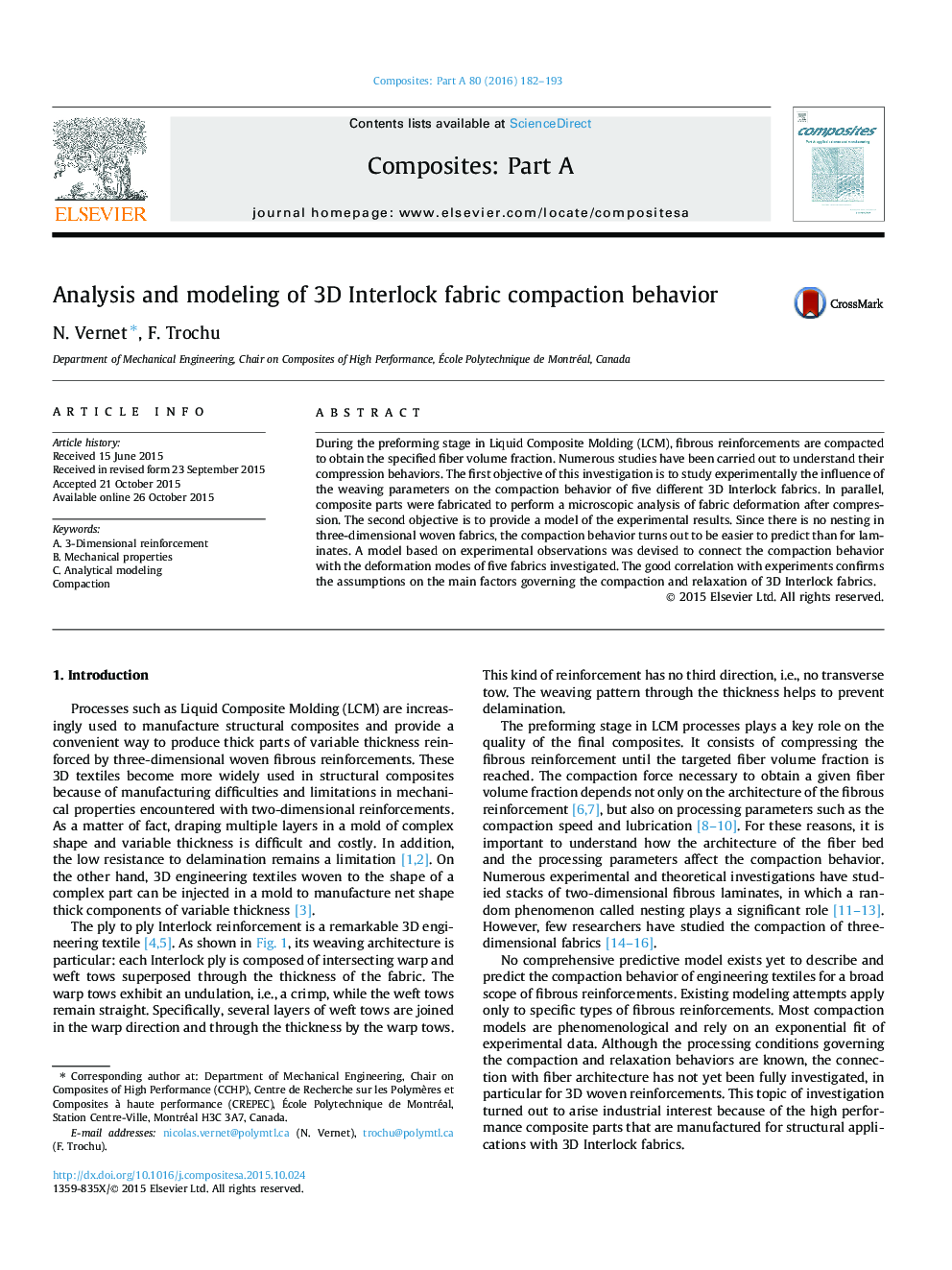| Article ID | Journal | Published Year | Pages | File Type |
|---|---|---|---|---|
| 1465818 | Composites Part A: Applied Science and Manufacturing | 2016 | 12 Pages |
During the preforming stage in Liquid Composite Molding (LCM), fibrous reinforcements are compacted to obtain the specified fiber volume fraction. Numerous studies have been carried out to understand their compression behaviors. The first objective of this investigation is to study experimentally the influence of the weaving parameters on the compaction behavior of five different 3D Interlock fabrics. In parallel, composite parts were fabricated to perform a microscopic analysis of fabric deformation after compression. The second objective is to provide a model of the experimental results. Since there is no nesting in three-dimensional woven fabrics, the compaction behavior turns out to be easier to predict than for laminates. A model based on experimental observations was devised to connect the compaction behavior with the deformation modes of five fabrics investigated. The good correlation with experiments confirms the assumptions on the main factors governing the compaction and relaxation of 3D Interlock fabrics.
